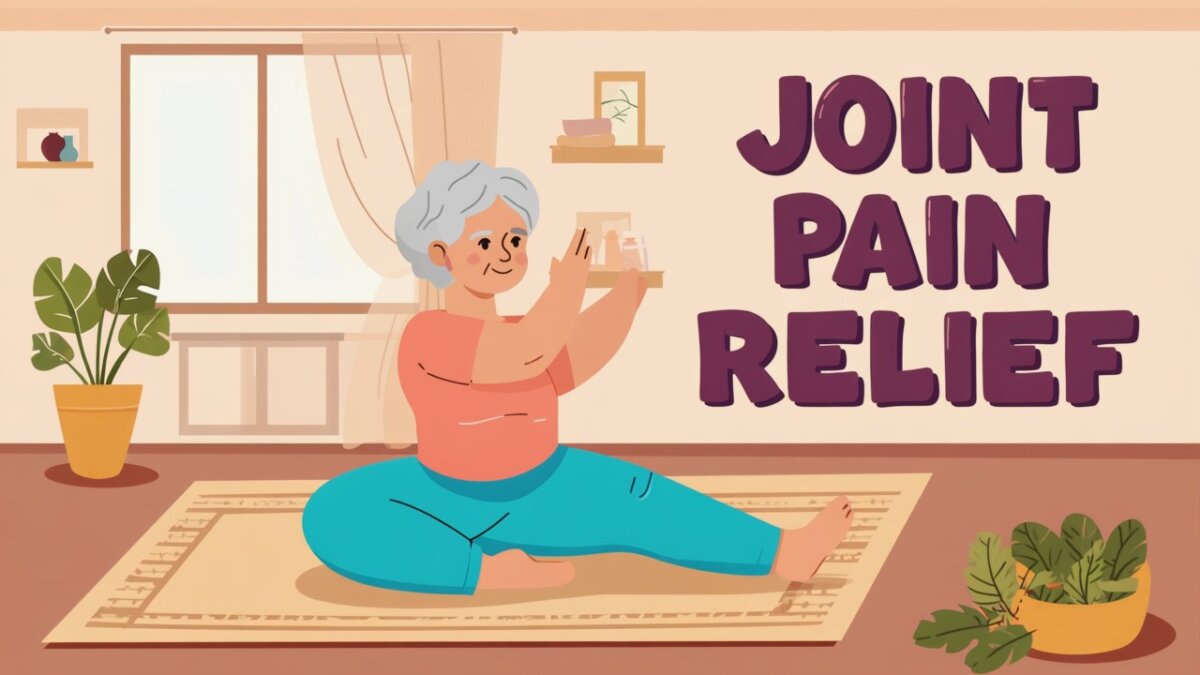Meta Description
Managing joint pain in seniors may be easier with safe tips for 2025. Learn expert-recommended strategies for comfort, mobility, and daily ease.
Summary Audio Script
Managing joint pain may feel overwhelming, but safe and simple steps can make daily life easier. In this guide, we’ll share senior-friendly tips for comfort, movement, and maintaining independence in 2025. With gentle routines, home adjustments, and expert advice, relief may be closer than you think.
Getting Started
Joint pain is one of the most common challenges faced by older adults, but it doesn’t have to define daily life. Experts agree that small, consistent changes in habits, environment, and routines can significantly ease discomfort and improve mobility.
This guide is designed for seniors who want safe, practical strategies for managing joint pain in 2025. We’ll look at movement tips, home adjustments, supportive tools, and daily habits that can reduce strain. You’ll also see examples of how other seniors manage their pain with simple lifestyle changes.
The focus here isn’t about doing more—it’s about doing things smarter and with less effort. Whether it’s choosing the right chair, stretching safely, or setting reminders for movement, these strategies can help you feel more in control. As always, consult with your healthcare provider before making big changes, but let this guide be your first safe step toward better comfort.
How We Chose
- Ease of Use — The best solutions fit seamlessly into daily life. Senior-friendly tools and tips are intuitive, with simple grips, large buttons, and no steep learning curve.
- Accessibility — Big text, ergonomic designs, and voice or tactile feedback help seniors adopt strategies safely. Accessibility was a key factor in every recommendation.
- Price — Joint-friendly tools don’t need to be expensive. Many affordable options cost under $50, proving that comfort doesn’t have to come with a high price tag.
- Safety — Reducing falls, easing strain, and avoiding misuse were top priorities. Tools with auto shut-off and expert-guided exercises were given preference.
- Availability — Every tip and product mentioned can be easily found in the U.S. and Europe, either online or in local stores, with reliable delivery and support.
Section 1 — Gentle Movement
Movement is medicine when it comes to joint pain. Low-impact activities such as walking, swimming, or chair yoga can help maintain flexibility, strengthen muscles, and reduce stiffness. The key is to start slow and stay consistent.
👉 Case Example: Mary, 72, began doing 10 minutes of chair yoga daily. After just a month, she noticed less stiffness in her knees when getting out of bed and felt more confident moving around her home.
🔗 Arthritis Foundation – Safe Exercise Tips
Section 2 — Home Adjustments
The home environment can either ease or worsen joint discomfort. Simple changes such as cushioned floor mats in the kitchen, supportive chairs with proper lumbar support, or lightweight cookware can greatly reduce strain on hips, knees, and wrists.
👉 Case Example: James, 75, replaced his old recliner with an ergonomic chair. Within weeks, his back pain improved, and he was able to watch TV comfortably without constantly shifting to relieve pressure.
🔗 National Institute on Aging – Falls and Home Safety
Section 3 — Supportive Tools
Assistive devices like joint braces, ergonomic canes, jar openers, and long-handled reachers are designed to make daily tasks easier. These tools are not signs of weakness—they are smart solutions that protect your joints and preserve independence.
👉 Case Example: Linda, who struggles with wrist pain, began using an electric jar opener. What used to be a painful chore is now effortless, allowing her to cook without stress.
🔗 AARP – Assistive Devices for Seniors
Section 4 — Daily Habits
Small habits can have a big impact. Drinking water regularly keeps joints lubricated, while using heat or cold packs can relieve discomfort. Taking short breaks to stand, stretch, or walk helps prevent stiffness. Even how you sit or stand can influence joint strain.
👉 Case Example: Robert, 79, sets a timer to stand every 30 minutes. By adding short movement breaks, his hips and lower back feel less stiff after afternoons spent reading or using the computer.
🔗 Mayo Clinic – Lifestyle and Home Remedies for Arthritis
Bonus Tips
- Take short walks after meals—begin with 5 minutes and build up gradually.
- Store frequently used items on waist-level shelves to minimize bending.
- Replace worn-out shoes every 6–12 months to protect knees and hips.
- Use phone or smart speaker reminders for stretching or posture breaks.
FAQ
Q1: What is the safest exercise for joint pain in seniors?
A1: Experts recommend low-impact activities like walking, swimming, or chair yoga. These exercises build strength and flexibility without putting excess strain on joints. Always start gently and consult a doctor before beginning new routines.
Q2: Are heating pads safe for seniors with joint pain?
A2: Yes, when used properly. Apply heat for 15–20 minutes and never fall asleep with a heating pad on. Modern heating pads with automatic shut-off features are especially safe and recommended for seniors.
Q3: Can diet really help with joint pain?
A3: While diet alone is not a cure, anti-inflammatory foods like fruits, vegetables, and omega-3-rich fish may reduce discomfort. A healthy diet supports overall joint health and complements other pain management strategies.
Conclusion
Joint pain can feel discouraging, but it doesn’t have to control daily life. By combining gentle movement, home adjustments, supportive tools, and healthy daily habits, seniors in 2025 have more options than ever to stay active and comfortable.
The strategies in this guide are designed to be safe, practical, and senior-friendly. Start small, such as adding a five-minute walk or adjusting your seating, and gradually build new habits. Remember, every person’s body responds differently, so it’s important to experiment and see what works best for you.
Most importantly, you don’t have to manage joint pain alone. Talk with your healthcare provider, explore senior wellness programs, and make use of community resources. Relief may be closer than you think—and with the right approach, comfort and independence can remain within reach.
You may also like:
Updated October 2025




